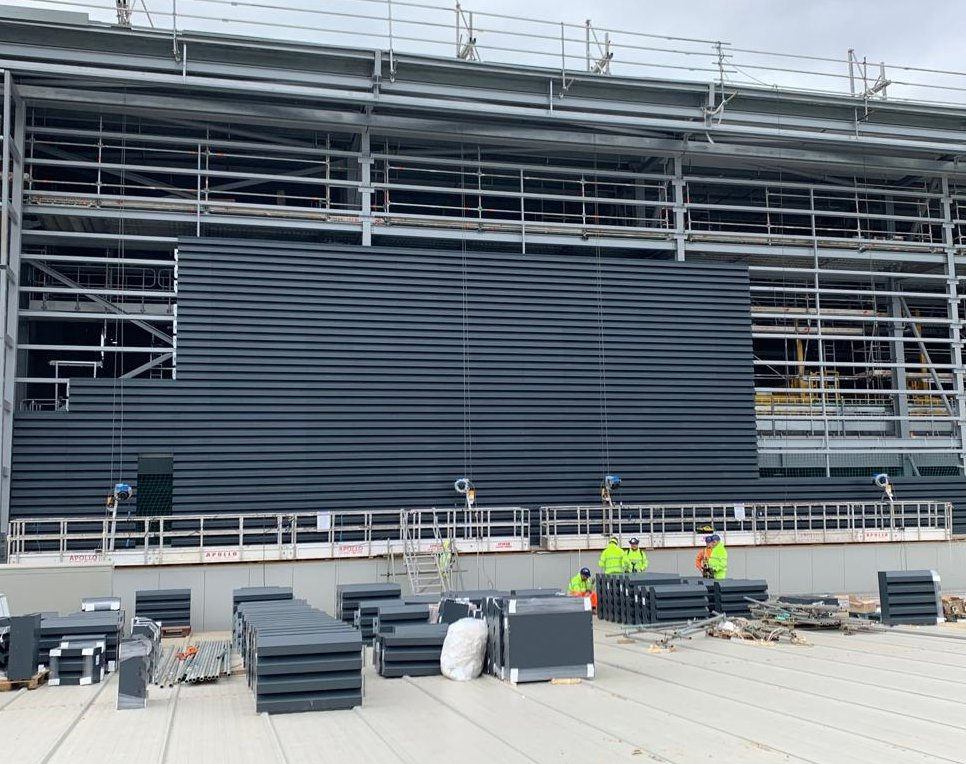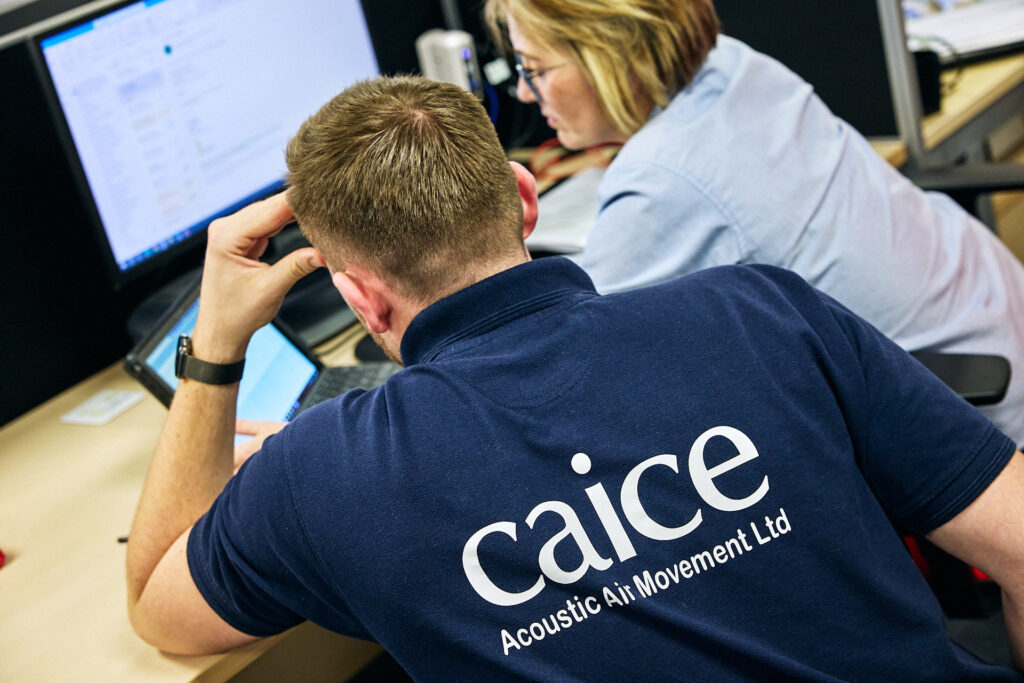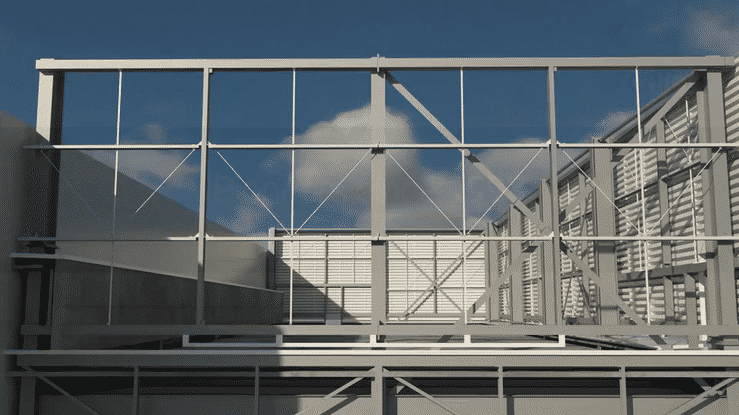Caice Acoustic Louvres tested for classification to BS EN 13501-1: 2018
The safety of our clients and the users of the buildings where our products are installed is our highest priority. So Caice Acoustic Louvres have been tested for fire safety by Warringtonfire in accordance with BS EN 13501-1: 2018* to ensure they are suitable for high-rise buildings.

Testing to BS EN 13501-1: 2018 is required for external building surfaces
As compliance can only be confirmed with testing, Caice Acoustic Louvres have been independently tested by Warringtonfire and are compliant for both residential and non-residential buildings.
*BS EN 13501-1: 2018 Fire classification of construction products and building elements – Classification using data from reaction to fire tests
Caice Acoustic Louvre test reports from Warringtonfire are available
We can provide the test report for you to use digitally to keep the ‘golden threads’ for your buildings intact and up to date. Helping you to comply with the Building Safety Act 2022 for the Acoustic Louvre element of your project, and reducing your potential personal liability.
Request Warringtonfire test report
Request the BS EN 13501-1: 2018 test report for Caice Acoustic Louvres

Building Type:
Height:
Class Required:
Caice Acoustic Louvres achieve a classification of A2-s1, d0 and are therefore suitable for both building types

Compliance with BS EN 13501-1: 2018 can only be confirmed by testing
Building Regulations Approved Document B Volume 1 & Volume 2 – 2019 edition states that with the specific requirement of testing to BS EN 13501-1: 2018, all Residential Building external surfaces more than 11 metres high require testing and need to achieve Class A2-s1, d0 and Non-Residential Building external surfaces more than 18 metres high require testing and need to achieve Class A2-s3, d2. Products cannot typically assume a European class unless they have been tested accordingly.
What is the Building Safety Act?
This Act creates the Building Safety Regulator, part of HSE, to oversee all buildings and having special focus on new or existing occupied buildings over 11 metres high and containing at least two residential units or buildings over 18 metres or seven storeys or more.
The design, refurbishment, and construction requirements apply to all residential buildings such as care homes, schools, hospitals and others meeting the same height threshold. Personal liability extends to the risk of an unlimited fine and imprisonment for up to two years.
To ensure that duty-holders identify, understand, manage, and mitigate building safety risks throughout the building’s life-cycle, those responsible for building safety must now retain a ‘golden thread’ of information.

What is the purpose of the ‘golden thread’ of information?
The purpose is to have the right information in order to understand the building and the steps needed to keep both the building and the people in it safe.
Having a golden thread means that those individuals responsible, will have easily accessible, reliable, up to date and accurate information. Without this information, it is very difficult to manage buildings safely, because the golden thread content is the information a duty-holder needs to enable them to both fulfil and demonstrate that they are carrying out their legal duties.
What can you do to protect yourself and your company?
Ensure your compliance with the Building Safety Act and don’t compromise your own personal liability, that of your organisation and the safety of the occupiers of your buildings. Only specify products that are shown through testing to comply with the relevant standards, designed to keep everyone safe. Individuals in senior positions should document the steps taken to ensure and monitor compliance with Building Regulations and the Building Safety Act and share these with all those in decision-making positions to evidence that the relevant individual took reasonable practical steps to avoid any breach.

Why risk buildings under 11 metres height by specifying Acoustic Louvres that haven’t been tested to allow classification to BS EN13501-1: 2018 when Caice products achieve a classification of A2-s1, d0?
Building regulations apply to all “building work” and are not limited to residential or high-rise buildings.
Why specify Caice Acoustic Louvres?
Caice Acoustic Louvres have been tested in accordance with BS EN13501-1: 2018, a Euroclass Harmonised European Standard and achieve a classification of A2-s1,d0 to meet the Building Regulations, ensuring your Acoustic Louvres don’t undermine compliance with the Building Safety Act 2022 for fire safety.
Our Acoustic Louvres, coated with a superior paint finish, are manufactured from high-quality materials that contribute to better overall system performance, efficiency and reliability, maintaining the quality and effectiveness of the Acoustic Louvre element of your building façade.


For a quick look
behind-the-scenes,
from design to delivery
Warringtonfire test report
Request the BS EN 13501-1 test report for Caice Acoustic Louvres
Acoustic Louvre system
Discover more about our pioneering ‘Continuous Line’ Acoustic Louvre system
Acoustic Louvre specifier tool
Save time and improve accuracy when specifying Caice Acoustic Louvres
